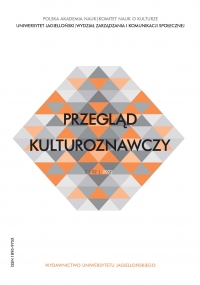Mikrobiologia obecności. O sztuce Anny Zagrodzkiej
Microbiology of Presence. On Anna Zagrodzka’a Art
Author(s): Ewa DomańskaSubject(s): Photography, Human Ecology, History of the Holocaust
Published by: Wydawnictwo Uniwersytetu Jagiellońskiego
Keywords: resilience; adaptation; field research humanities; arts of attentiveness; microbiology of mass killing sites; Alternaria alternata; Anna Zagrodzka; Polaroid photography;
Summary/Abstract: This article locates Anna Zagrodzka’s project Alternaria alternata in the context of reflections on the relations between genocide and ecocide as manifested in problems of conservation of Nazi extermination camps. The artist’s photographs depicting elements of the landscape of death camps chronicle the events and processes of deterioration that result from objects, such as buildings, walls, fences and plants, being inhabited by bacteria, fungi and lichen. Approaching the environmental microbiology of mass killing sites by applying the methods of laboratory research to examine elements of buildings, artefacts, water and the soil offers incontrovertible evidence of the relentless vitality of life at such locations. In this article, I show how Zagrodzka’s research contributes to the laboratorial humanities, on the one hand, as well as to field research humanities, on the other. I also demonstrate how her work applies the arts of attentiveness that are typical of the research methods of multispecies ethnography. Analysis of the artist’s work shows that the continued existence (or survival) of Homo sapiens will require the preparation for difficult and long-lasting processes of adaptation to changing conditions brought about by ever new threats, crises and potential catastrophes. Adaptation can be assisted by artworks and by research in the humanities that create future scenarios enabling preparation for possible, though often unforeseeable, events.
Journal: Przegląd Kulturoznawczy
- Issue Year: 52/2022
- Issue No: 2
- Page Range: 304-314
- Page Count: 11
- Language: Polish

